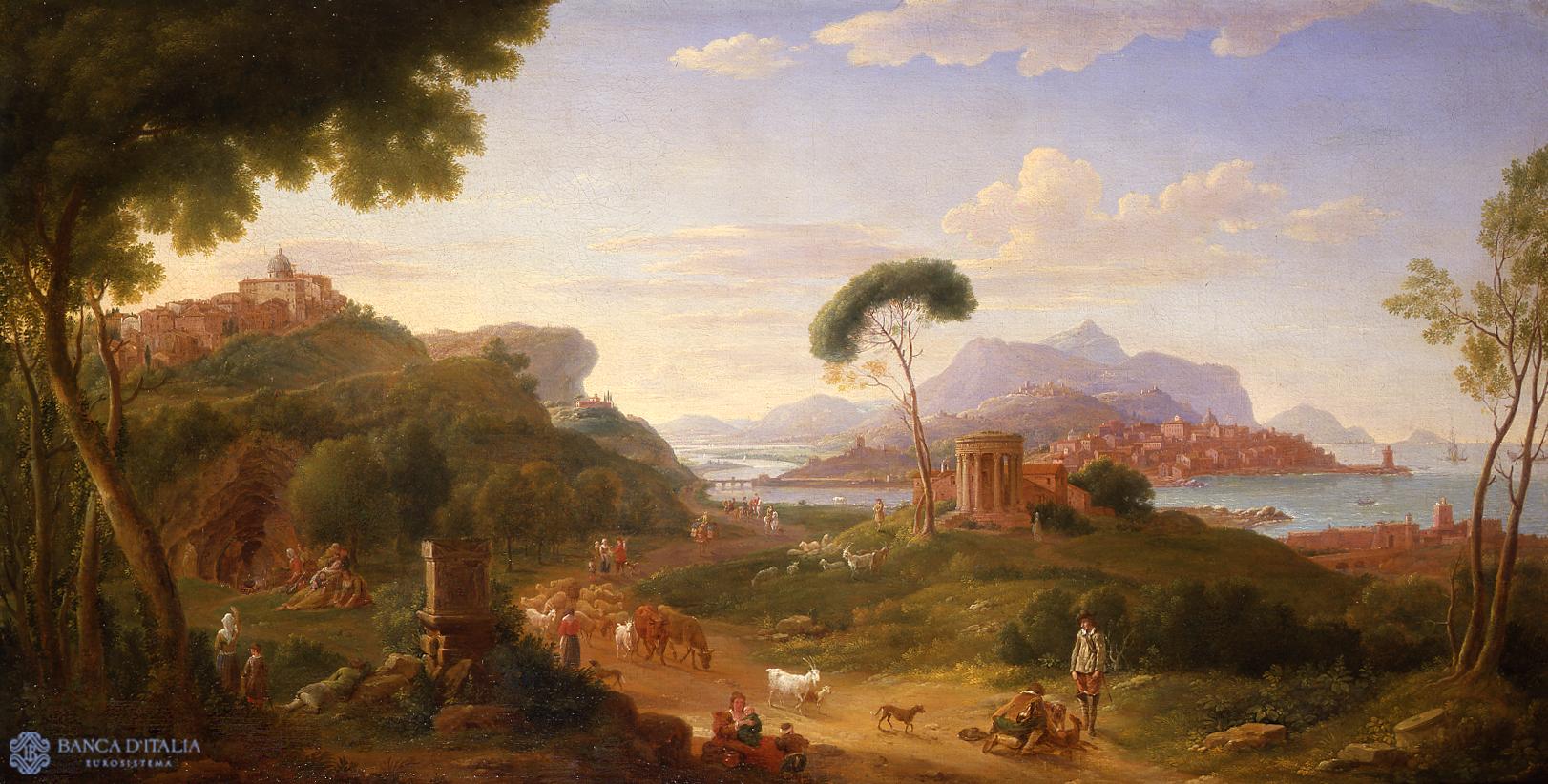All’interno di un paesaggio tipicamente mediterraneo, caratterizzato da lecci, pini e cespugli, numerosi personaggi seguono il percorso di una strada sterrata. In primo piano è seduta una donna, più dietro avanza un gregge di capre e di pecore, mentre sullo sfondo compaiono degli uomini, tutti vestiti con i tipici costumi laziali. Nello spazio circostante sono sparsi piccoli paesi, arroccati sulle alture o posti in riva a un lago, e numerose rovine antiche.
La piccola tela, assieme al suo pendant, costituisce un esempio di paesaggio classicista proprio della Roma del primo Settecento. Queste piccole vedute immaginarie della campagna romana erano particolarmente richieste dai viaggiatori del Grand Tour, ma rispondevano anche al gusto della colta aristocrazia locale. E’ evidente, in quest’opera, il riferimento ad alcuni monumenti antichi: il tempietto in rovina, dall’inconfondibile forma circolare, è una chiara ripresa del celebre Tempio della Sibilla, presso Tivoli, seppure del tutto decontestualizzata. Il paese sulla sinistra, dominato da una chiesa con la sua cupola, evoca, invece, Castel Gandolfo o uno tanti abitati che costellano i dintorni della città dei papi. La cura con cui è rappresentata la vegetazione richiama i paesaggi di Claude Lorrain ed è arricchita da quel gusto per il dettaglio, tipico della tradizione nordeuropea.
Hendrik Frans Van Lint , detto lo Studio, Veduta con due paesi e un tempietto circolare
Veduta con due paesi e un tempietto circolare
Dipinto
XVIII Sec.
Paesaggio

Artista
Cronologia
1718
Materia e tecnica
Olio su tela
Misure
cm 56 x 108
Compilatore
Alessandro Zuccari
